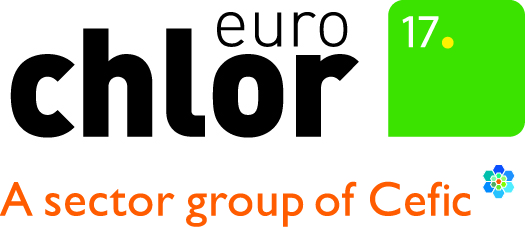FAQ
Is chlorine beneficial to human health?
Chlorine is essential for a healthy human life. It is vital for water disinfection and sewage and industrial effluent treatment. Eighty-five percent of medicines either contain chlorine or use chlorine in the production process. Chlorine is also an essential intermediate in the production of certain materials used for making medical equipment such as silicone rubber which insulates the electrodes and catheters in a pacemaker, PVC blood bags and sterile tubing. Water disinfection is another application in which chlorine plays a vital role.
Check more fascinating applications on http://www.chlorinethings.eu/
How many people work in the chlorine industry?
The industry employs directly about 7,500 people in Europe. However, tens of thousands of other jobs are related to chlorine, in the downstream industries like the PVC, the polyurethane and the the polycarbonate industries. Indirectly, millions of jobs are related to products made with chlorine chemistry: medical doctors health care workers, construction workers, firefighters, policemen etc .
What is caustic soda used for?
More than half of caustic soda produced is used in the chemical industry and the rest for the manufacture of products such as soap and detergents, textiles, paints, glass and ceramics. It is also used in water treatment, aluminium production and oil refining.
Read more about the uses of caustic soda.
What else is produced in the chlorine manufacturing process?
When chlorine is produced, caustic soda (otherwise known as sodium hydroxide – NaOH) and hydrogen (H2) are formed as co-products. For every tonne of chlorine made, 1.1 tonnes of caustic soda (100%) and 0.03 tonnes of hydrogen are produced.
How much chlorine and caustic soda is produced every year in Europe?
In 2015, the European chlor-alkali industry produced 9.6 million tonnes of chlorine and 9.4 million tonnes caustic soda. As our product is a key industrial building block used to create products in many sectors, production levels of chlorine act as a reliable barometer of the economy.
How is chlorine made?
Essentially, chlorine is made by passing an electric current through salt water (brine). There are three main production routes: the membrane, the mercury and the diaphragm process. Although most chlorine in Europe is now already manufactured using the membrane process, the industry is committed to converting mercury production units to the more environmentally-sound membrane process by 2020.
Read more about the membrane, the mercury and the diaphragm process.
What other uses does chlorine have?
Chlorine is a key chemical building block and is, therefore, used in the manufacture of many products. Although chlorine chemistry is used in many manufacturing processes, it is not always in the end product. A third of all chlorine produced in Europe is used to make productsnotcontaining chlorine.
Chlorine is in bleach (sodium hypochlorite) which is used to combat microbes and contagious diseases, particularly in hospitals.
An example of a process involving chlorine chemistry, but where no chlorine occurs in the end product, is the production of silicon of 99.99% purity. This is needed to produce microchips. A similar purity is necessary for solar cells. To achieve such purity requires a complicated purification process. The most commonly used method is to react 98% pure silicon with hydrochloric acid to make trichlorosilane. This is vaporized and then condensed in distillation columns until all other substances are removed. Finally, the trichlorosilane vapour is conducted with hydrogen across heated silicon rods. The ultrapure silicon is deposited, and the hydrogen chloride that forms as a by-product can be returned to the production process.
Polyurethanes (your shoe soles!) and polycarbonates (your car headlights) are also examples of widely used materials produced using chlorine chemistry, but where chlorine does not occur in the end product. Applications of polyurethanes include the manufacture flexible and rigid foams, coatings, adhesives and sealants. Because of their extreme toughness and transparency, polycarbonates are used in the production of many everyday items such as computers, soft drinks bottles and CDs.
What is the main use of chlorine?
The chief application of chlorine is in the manufacture of PVC. Thirty-four percent of the chlorine produced in Europe is used to make this versatile product. PVC is used in 85% of medical devices including blood bags, sterile tubing, catheters and prosthetics. It is also a key material in the construction sector: used for window frames, roller shutters, water pipes, floor coverings etc.
After PVC, probably the most well known application of chlorine is for disinfection of drinking water and swimming pool water. The purification of drinking water is vital to minimise the often devastating impact of waterborne diseases such as typhoid, cholera, dysentery and gastroenteritis. These have killed more people than all the wars in history. As a disinfectant, chlorine saves lives.
Read more about uses of chlorine. And certainly also visit our website http://www.chlorinethings.eu/
Can chlorine be found in nature?
Chlorine (one element of the ‘halogen’ group) has an established place in the natural world: the sea, plants and animals all contain and produce vast amounts of chlorinated molecules. In the human body itself, chlorinated compounds are indispensable to the functioning of the vital organs. For example, hydrochloric acid plays a key role in the digestive process: in YOUR stomach!
Was chlorine discovered or invented?
Chlorine was discovered by Carl W. Scheele (1742-1786) in 1774 but it was not yet known as an element. Due to its strong oxidising properties it was thought by most chemists to contain oxygen and was called oxymuriatic acid (muriatic acid being HCl or hydrochloric acid).
More information about C. W. Scheele on chemistryexplained.com
It was Humphry Davy (1778-1829) who exposed the gas to white-hot carbon in an attempt to remove the oxygen as carbon dioxide. He was never able to produce oxygen or any compound known to contain oxygen, and he finally concluded that chlorine had to be an element. Because of its greenish yellow colour, he called it “chlorine” after the Greek “chloros” meaning yellow-green.
